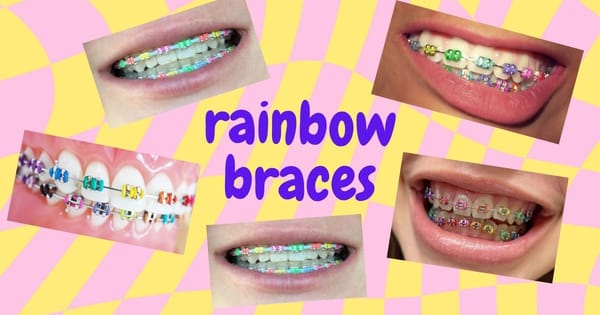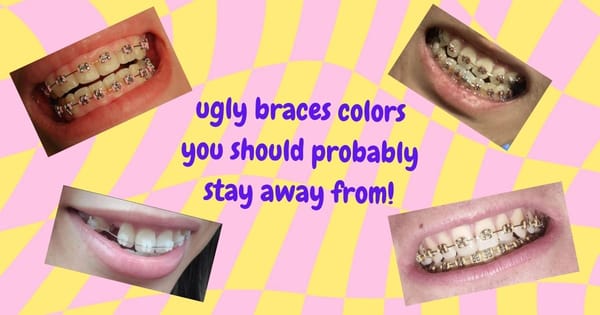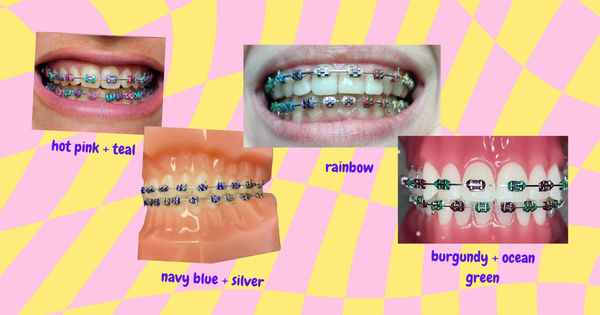Lindsay Lohan's Smile Story: Before and After Veneers

Alright everyone, let's dive into a topic many of you have asked about: the evolution of Lindsay Lohan's smile.
From her iconic Mean Girls days to her recent comeback, Lindsay's journey has been incredibly public, filled with massive highs and very challenging lows.
And alongside her career and personal life, her teeth have also undergone a significant transformation that has definitely caught people's attention.
As a dentist, I find these transformations fascinating, not just aesthetically, but because they often tell a deeper story about health, confidence, and the pressures of the spotlight.
Lindsay's case is particularly complex, involving natural variations, periods of visible damage, and ultimately, cosmetic restoration. So, let's break down what we can see, what likely happened, and what we can learn from her smile story.
Phase 1: The Early Days – That Familiar Mean Girls Smile
Cast your minds back to the early 2000s. Freaky Friday, Mean Girls – Lindsay Lohan was the teen queen. Looking closely at her smile during this era, we see her natural teeth.
One thing noticeable is that her upper front teeth seem to tilt slightly inwards, towards the palate.
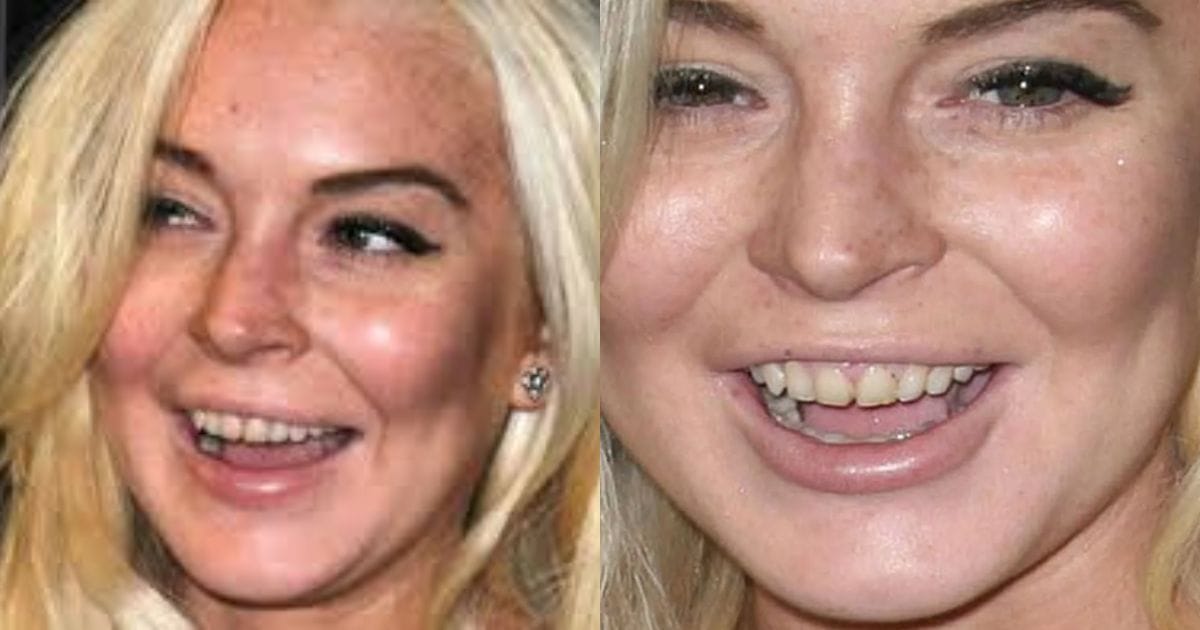
This isn't uncommon and can sometimes be associated with factors like a narrower palate, which might stem from childhood habits like thumb sucking or prolonged pacifier use.
It’s just a natural variation, part of her unique smile structure back then.
Her teeth were generally healthy-looking, maybe not perfectly aligned or blindingly white by today's Hollywood standards, but they fit her face and youthful look.
There might have been some subtle bleaching along the way, as is common for actors, but nothing dramatic initially. They were, as some fans noted, kind of cute and characteristic.
Phase 2: Troubled Times & Visible Dental Distress
This is where things get sensitive, and it's important to approach this with empathy.
Starting around 2007, Lindsay publicly battled significant personal issues, including addiction and legal troubles.
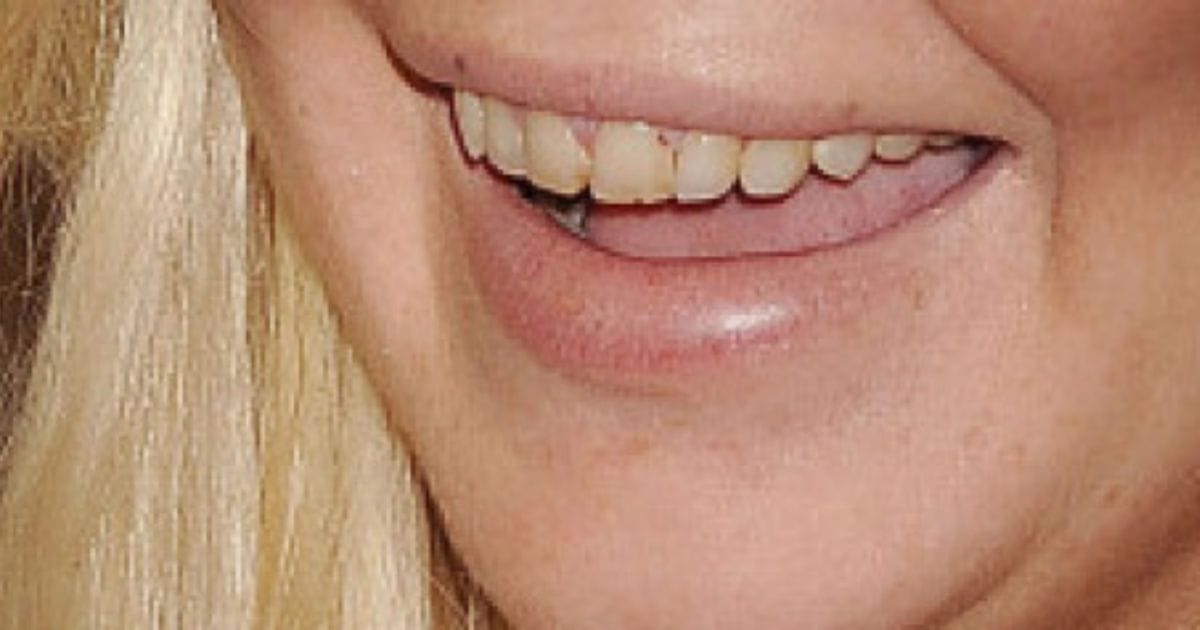
During this period, photos emerged that caused considerable concern, showing visible changes to her teeth.
- Discoloration: Her teeth appeared significantly darker, yellowish, or brownish in some photos.
- Erosion & Attrition: The edges of her teeth, particularly the front ones, looked chipped, worn down, and uneven. This type of damage – erosion (loss of enamel due to acid) and attrition (wear from grinding or clenching) – looked quite pronounced.
Now, what could cause this? Based on the visual evidence and public knowledge of her struggles, several factors could have contributed:
Substance Use
Certain substances are notorious for causing severe dry mouth (xerostomia). Saliva is crucial for neutralizing acids and protecting teeth.
Without adequate saliva, the risk of decay and erosion skyrockets. Some substances themselves can be acidic, and associated lifestyle factors (poor nutrition, neglected hygiene) during active addiction compound the problem significantly.
Chain smoking, often linked with substance use, also causes heavy staining and contributes to poor oral health.
Eating Disorders
Bulimia, which involves frequent vomiting, exposes teeth repeatedly to highly corrosive stomach acid. This typically affects the back surfaces of the front teeth most severely, but depending on various factors, visible damage to the front can also occur.
Reddit comments debated this, noting front surface damage is often linked more to other factors, but acid reflux (which can accompany various health issues) can also play a role.
Poor Oral Hygiene
During periods of intense personal struggle, consistent brushing and flossing can unfortunately fall by the wayside, allowing plaque to build up, leading to decay and gum problems.
Bruxism (Grinding/Clenching)
Stress and certain substances can exacerbate teeth grinding, leading to the kind of wear and chipping (attrition) seen on the edges of her teeth.
Let's be real for a second... it's impossible (and inappropriate) for us to definitively diagnose the exact cause from afar.
But the visual evidence strongly suggests a combination of factors related to her widely reported health and lifestyle challenges during that time likely led to significant dental damage.
It's a stark reminder of how profoundly overall health and oral health are interconnected. Seeing those photos back then was genuinely concerning, not just aesthetically, but for what it implied about her well-being.
Phase 3: Restoration and a Brand New Smile
After stepping back from the spotlight for a period and focusing on her recovery, Lindsay re-emerged looking refreshed and healthier – and with a dramatically different smile.

It's clear she underwent significant cosmetic dental work, most likely a full set of porcelain veneers on her upper teeth, and possibly the lower front teeth as well. The change is undeniable.
The discoloration, erosion, and unevenness are gone. Her teeth now appear very even in shape, length, and alignment, and are significantly whiter. They look uniform and aesthetically pleasing in the conventional Hollywood sense.
Covering the Damage: Veneers essentially act like new facings for the teeth. They are excellent at masking underlying damage like severe staining, chips, and worn edges.
Given the state of her teeth previously, veneers were likely the only predictable way to achieve such a complete aesthetic restoration. Whitening wouldn't fix the shape issues, and bonding might not have been durable enough for the extent of the damage.
The "Food Incident": Okay, we have to address the slightly awkward photos where food debris was visible between her veneers shortly after she got them.
Look, it happens to the best of us! But it’s actually a good (if unintentional) PSA. Veneers, especially when they close gaps or create tight contacts, require meticulous flossing and hygiene.
Food can get trapped easily, and because you can't feel cavities developing underneath veneers as easily, diligent cleaning is non-negotiable to prevent decay and gum inflammation around them.
Maybe someone on her team should have done a quick check, but hey, it’s a relatable human moment!
Analyzing the Aesthetics of the Veneers
From my chair, evaluating veneers involves looking beyond just "white and straight."
Shape & Proportion: Her new teeth are much more uniform and perhaps slightly longer than her natural teeth.
They create a very full, broad smile. Some fans felt they looked less unique than her original teeth, which is a common sentiment when natural character is replaced by more standardized cosmetic shapes.
Color: The shade is significantly whiter, fitting the current celebrity trend. Hopefully, they chose a shade with some natural translucency (that slight see-throughness at the edges) to avoid looking too opaque or chalky, which can scream "veneers!"
Sometimes, overly opaque veneers can give that "porcelain toilet" look I often warn patients about.
Overall Fit: They seem well-integrated into her overall look, contributing to her more polished and mature image.
Cosmetic dentistry, when done well, should complement the entire face.
The Investment: What Does a Smile Like This Cost?
Restoring a smile with significant damage using veneers is a major investment. Let's estimate based on the likely number of teeth treated and the cost data provided:
- Number of Veneers: Visually, it appears she likely had at least her upper front 8 or 10 teeth treated to create that wide, uniform smile. Possibly some lower front teeth as well, but let's focus on the uppers for a baseline.
- Cost Per Tooth (Porcelain): Using the average US range of $1,000 - $2,500 per porcelain veneer.
- Estimated Total (Upper 8-10 Teeth):
- For 8 veneers: $8,000 - $20,000
- For 10 veneers: $10,000 - $25,000
- Potential Additional Costs: This doesn't include any potential preliminary work needed (like treating decay or gum issues before veneers could be placed) or if lower teeth were also treated.
This is a significant financial commitment. And remember my constant refrain: veneers are not permanent.
They are restorations that require replacement, typically every 10-15 years, sometimes longer with perfect care, sometimes shorter if complications arise. So, that 10k-25k+ investment needs to be planned for repeatedly over a lifetime. This is something I always stress, especially to my younger patients considering irreversible procedures.
Fan Reactions: Understanding the Spectrum
The fan comments truly capture the range of public opinion:
- Empathy & Support: Many expressed happiness for Lindsay's apparent recovery and well-being, recognizing the dental work as part of her journey back to health.
- Nostalgia for the Old Smile: Some missed her original, unique teeth and felt the veneers looked less distinctive or perhaps "too perfect."
- Acknowledgement of Necessity: Many understood that given the previous damage, significant intervention was likely required.
- Critique & Speculation: Some focused on the aesthetics (liking or disliking the new look), while others continued to speculate about the causes of the initial damage or commented on other perceived cosmetic procedures.
This mix of reactions highlights how invested people become in celebrity narratives and how subjective dental aesthetics can be.
It also shows an underlying understanding that her dental transformation wasn't just about vanity, but likely about necessary restoration after a difficult period.
My Professional Perspective: Restoration Over Reinvention
Looking at Lindsay Lohan's smile journey, my perspective differs slightly from cases where someone with perfectly healthy teeth opts for veneers purely for cosmetic enhancement.
- Necessary Intervention: Given the visible erosion and damage, cosmetic restoration wasn't just an option; it was likely a necessity for both function and aesthetics. Leaving severely eroded teeth untreated can lead to sensitivity, further breakdown, and bite problems. In this context, veneers served a crucial restorative purpose.
- A Confidence Boost: Rebuilding a smile after significant damage can have a profound impact on self-esteem and confidence, which is likely invaluable, especially when rebuilding a career in the public eye. I've seen firsthand how restoring a damaged smile can be life-changing for a patient's outlook. I literally gasped once when I saw the before/after of a patient who had similar struggles – the change in their eyes, not just their teeth, was incredible.
- The Veneer Reality: While necessary here, the veneers still come with the standard caveats: lifelong maintenance, replacement costs, and the need for impeccable hygiene, especially given potential underlying risk factors like dry mouth if any medications are involved long-term.
- Loss of Uniqueness: While the restoration looks good by conventional standards, it's true that the unique character of her original smile is gone. This is often the trade-off with extensive cosmetic work – you gain uniformity but lose individuality.
Ultimately, Lindsay Lohan's dental transformation is a powerful story of overcoming adversity.
The veneers represent not just a cosmetic change, but a visible symbol of recovery and taking control of her health and image.
While I generally advocate for preserving natural beauty when possible, in cases of significant damage like this, restorations like veneers play a vital role in giving someone back their smile and confidence.
It's a testament to the restorative power of modern dentistry, but also a reminder of the importance of overall health in maintaining that precious smile.
What are your thoughts on Lindsay's smile evolution? Does it change how you view cosmetic dentistry? Share your perspective below!


